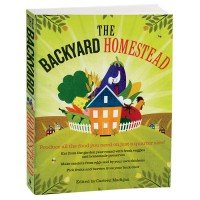

If you enjoy garlic but rely on your local grocer to supply your cloves you are missing out on true garlic flavor, quality, and the variety that comes with growing your own. Once you experience the taste treat of homegrown gourmet garlic, ordinary cloves just won't do.
Grocers typically sell a single strain of garlic that's grown in California and shipped across the country. In comparison there are probably hundreds of different varieties of garlic with flavors ranging from mild, to spicy, to fiery hot with a flash similar to horseradish.
You can grow bulbs that have subtle hues and marbling that is very striking in appearance. Some garlics are best suited for roasting and eating as a side dish, while others lend themselves to baking and spreading onto thick slices of French bread. Some varieties are great when used raw in dishes such as guacamole or hummus. Other garlic varieties have complex, lingering flavors that work well in cooked dishes, soups, and stews.
There's a whole world of exciting and unique garlic varieties, but in order to take advantage, you'll have to grow them yourself or purchase bulbs from specialty suppliers. It's much cheaper to grow your own, and fortunately garlic is very easy to grow, requires little care, and is virtually untouched by insect pests.
Garlic is usually divided into two categories, "softneck" which is the type normally found at the grocer, and "hardneck" which is the type prized by gourmet chefs and garlic aficionados. The hardneck varieties are preferred for their much larger clove size, easier peeling, and better overall flavors to choose from. On the downside, the hardneck varieties do not keep in storage for as long as the softneck types.
When growing garlic you should always start with good quality seed stock. Using garlic from the grocer as seed would give you the same limited variety and there's a chance that the garlic bulbs may have been treated with agents to retard sprouting. After your initial purchase of garlic seed you can easily save your own seed for future plantings.
One of the amazing characteristics of garlic is that you can plant the seed in the fall to start the growth process that will be completed the following summer. Garlic is very hardy and many varieties don't perform at their best unless subjected to harsh winter conditions. If you live below zone 7 you may find it difficult to raise garlic and be limited to spring plantings of the Asiatic varieties that can tolerate warmer climates.
The timing of your fall planting is critical. You will want to get the garlic planted in time that the cloves have a few weeks to establish root development before freezing weather conditions set in. Yet you don't want to plant so early that cloves have time to send up above ground shoots before cold temperatures set in to slow the growth. If you get a little leaf growth don't worry, your garlic will be just fine. The fall root growth will prepare your garlic plants for an early emergence and promote rapid growth as soon as spring arrives.
Here in Oklahoma, late September, up until the end of October is the best time to plant fall sown garlic. A good rule of thumb is to plant your garlic seed about four to six weeks before the ground is subject to freezing in your region. Plant the garlic in a prepared raised bed that has been loosened and had a layer of compost or an organic fertilizer incorporated into it.
Carefully separate the cloves shortly before you're ready to plant them. The end with the root scar which was attached to the bulb should be facing down when planted. I lay all of the cloves out on top of the soil of the bed to get the proper spacing distances that I want, then I go back and gently press each clove about three inches into the soil.
After the ground freezes in early winter I usually mulch the garlic bed with a three or four-inch layer of straw or shredded leaves. This will provide protection over the winter, conserve moisture, and restrict weed growth in the spring. Other than providing the layer of mulch, once your garlic is planted there's nothing further to do until springtime. I'll discuss tending and harvesting your garlic in a future newsletter next spring.
Planting Chart
The Top 10 Best Companion Plants


 The food industry's digusting secrets exposed. How to protect yourself.
Click Here!
The food industry's digusting secrets exposed. How to protect yourself.
Click Here!

